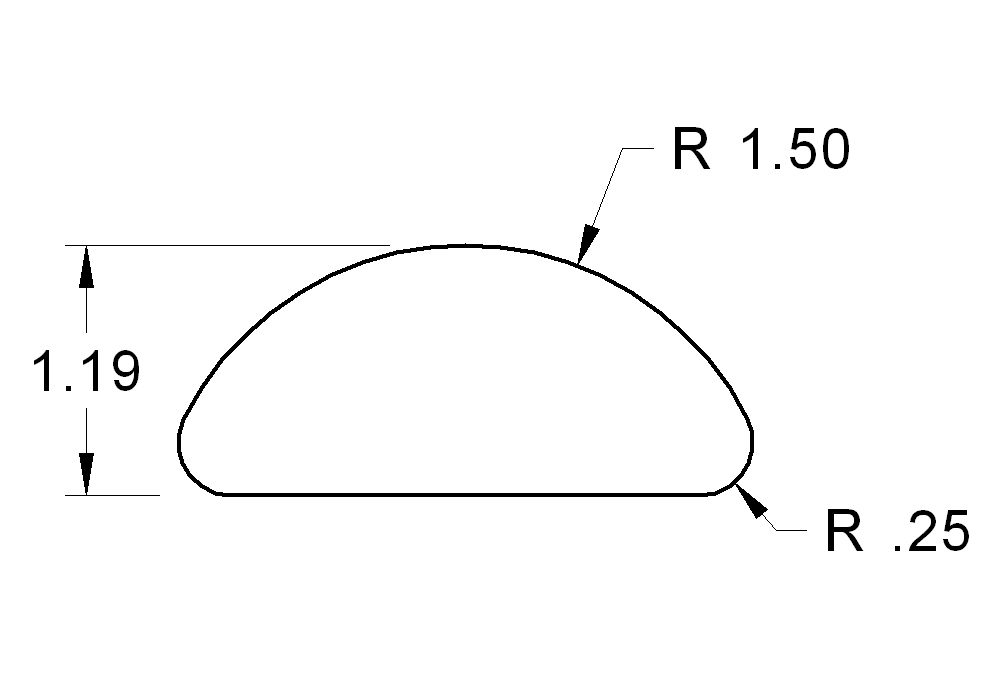

I
recently had the pleasure of having a long phone conversation with Ron
Seekamp, from Fridley, MN. As a lot
of folks know, Ron is the man that played around with ‘adjustable' crescents
which got him notoriety and was written up in the Purple Martin Update for his
efforts.
As
of late there's been a lot of concerns about people changing over to regular
sized 1 3/16" crescents
and of course, their 'anxieties' of watching their birds try and try and continually
fail to enter these forms of entrance holes. I’ve had this on my mind a
lot and wonder if there really are some birds that ‘just can’t figure them
out’. I don't see it at my site.
In fact, my birds don't even know they're there and act just as if they were round holes.
Along with that, there’s all the
folks that are wondering if a ‘new’ colony can be started with crescents
alone. Both questions have been
answered many times, but still, folks balk at using them or others refute the
need for them at all. Because everyone’s
situations are different and no one scenario will work the same for everyone,
some of those questions get pretty tough to answer.
However, throughout the purple martin world, we are quickly learning that the use of some form of SREH is now a requirement in a martin colony simply because the European starling has become a major factor in keeping martins now. These pests are now the most populous bird species in the U.S., are just about everywhere and, although maybe not at a particular site right now, sooner or later, they will visit everyone’s sites. I don’t know about everyone else's situations, but I still work for a living and I’m just not able to spend the entire day watching my site. Because of where I live I am infested with starlings so crescents are a requirement. My job requires that I leave the house each day and plus, I do have other things that need doing and I just can't be at my site 24 hours a day to protect it.
Still, I’m asked these
questions time and again because of my web page… "Are crescents really
necessary"?, "Can
a new colony be started with them"?, "What
about the new excluder"?, "Are these SREH's as
good as they say they are"?, "How do I
make them"? … etc, etc…
So, to these folks, I submit these thoughts and I do so in a couple of different scenarios. There are probably a lot more, but I just don't have the time to write about all of them. Some thought will have to be given to the individual scenario of the landlord reading this. In all scenarios presented here, I’m going to assume that starlings are a factor, because if they aren't now, sooner or later, they will be. Also, these scenarios include natural gourds as one of the housing selections.
Scenario
#1:
Your housing, (new or old) has regular round entrance holes. The martins come and decide to set up shop, but the constant barrage from starlings ends up driving them away or worse yet, you lower the house and find dead martins inside the compartments because of the starlings treacherous ways.
Scenario #2
Your housing (new or old)
has crescent openings on each compartment that is
the normal 1 3/16" size to begin with?
Martins come and figure them out
and all is fine and good. You have your martins and they are safe from the starlings.
Scenario
#3:
Martins come and find regular sized crescents (1 3/16") however; after trying for a good length of time, they just can't seem to figure them out. You, the landlord, get anxious and because you don't want to lose your martins, either replace the crescents with round or go and whittle the crescent larger so that they can get in. Yes, you've now allowed your martins to get in, however; you've done two things.
-First, you've ruined the crescents and now they are no longer starling resistant.
-Second, the starlings, who are just as hungry for nesting cavities as the martins, are also able to negotiate these whittled out crescents and thus, there is no difference than if you had round holes. Your martins are no longer safe and the starlings can again do their thing and your martins could very likely end up dead.
I am assuming every one is getting my point here so let's look at one more scenario that can be applied to either new housing or old housing.
The Excluder. I'm leaving this one alone for a couple of reasons. First, the inventor, a man by the name of Duke Snyder, patented the design so I don't want to get into this kind of mess and secondly, I've found that the design is very difficult for the average person to make and so far my attempts at making them accurately have proven difficult. In order for these to work, I believe these need to be stamped with tooling dies to be accurate and apparently Duke is interested in some return for his time. I'm not trying to make this hobby difficult, I'm trying to make it easy and I'm trying to do some good for the martins by allowing the average landlord to be able to make and use the tools of this hobby. Also, my attempts to add these Excluders to gourds has proven to be extremely difficult because of the curved surfaces. However, crescents are no problem at all. Secondly, excluders seem to have a lot of problems with 'thick' wooden houses. The birds just can't seem to negotiate the thick walled houses with Excluders.
Enter the adjustable crescent.
OK, here's what this whole thing is leading up to. What if you could have the BEST OF BOTH WORLDS? What if you could have your large entrance holes to allow martins to get in, while at the same time, gradually changing to regular crescents and, during the process of changing to crescents, 'training' your martins to use them.
Training Martins???
No, I haven't lost it. Now just stop to think for a minute. With the increased sized crescents, say 1 3/8", martins will treat them exactly as if they were regular round 2" holes. They'll be popping in and out just as if nothing was amiss and you the landlord will be happy that your martins are able to easily negotiate these large entrance holes. As the season goes on, the martins decide on a cavity and begin nest building. Many trips are needed to build the nest. (Also, here is where good record keeping is a necessity).
After the martins have started nesting, you the landlord, go out and lower the house and while it's down, you CLOSE THE ADJUSTABLE CRESCENT by 1/16". Raise it back up and let the martins get used to it. A day or two later you repeat this same procedure. Another 1/16" is gone. Still the martins quickly adapt and continue with their nest building. Again, a day or two later, the same thing, another 1/16". Again, the martins adapt. Get the picture. Before long, your crescents are all the way down to 1 3/16", your martins are trained to use them and the starlings are foiled by not being able to enter.
Now, what do you think? Did we train the martins? Are they not able to use the crescents just as if they were there all along?
So, let's stop to think some more. If we started with 1 3/8" high crescents, lowering them 1/16" every other day or so would be 4 changes to achieve the 1 3/16" crescent that is 99% starling resistant. That's only a couple of days that we take our martins from starling loving large holes down to starling hating resistant holes. And, the beauty of it all, the martins have learned to use them and don't even know about it.
I know this sounds like a nutty thing, but I'm serious. In fact, I'm willing to bet that we don't even need to go all the way up to 1 3/8" to begin with. We may only need to go to 1 5/16". Since my entire site is nothing but the regular crescents, I had to find someone that wanted to change to SREH's so that I could do some in-depth studying to see just where it could be started. I know of a couple of landlords that still have round holes and are wanting to make the change, so we'll see what happens.
To further illustrate my thoughts, I've added a few drawings showing three different sizes of openings. They are exaggerated of course to show what I'm talking about, but it should be able to at least get my point across.
This first drawing shows the two individual parts that are used to make up the adjustable crescent. These parts can be made from a number of different materials and as long as they are solid materials, they'll work just fine. I used 1/16" thick white polypropylene plastic for mine because I had it available and it stands up good in the direct sun light. 1/16" thk aluminum will also work great.
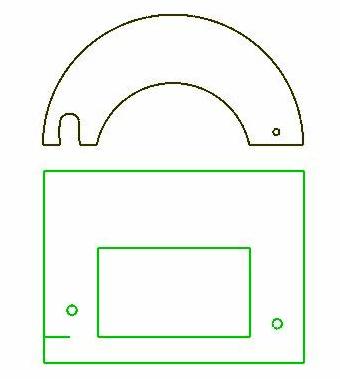
This one shows the two parts put together and in the full crescent adjustment.
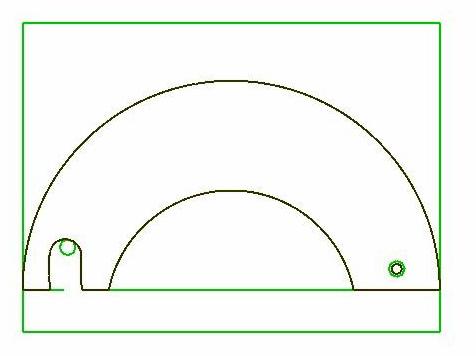
This one shows the crescent adjusted to the top of its range, giving a full 1 3/8" opening for the martins to get thru. The small hole on the right is the pivot point and the slot on the left is the clearance for pivoting. Use a wing nut with a large washer to cover the slot and hold it in place.
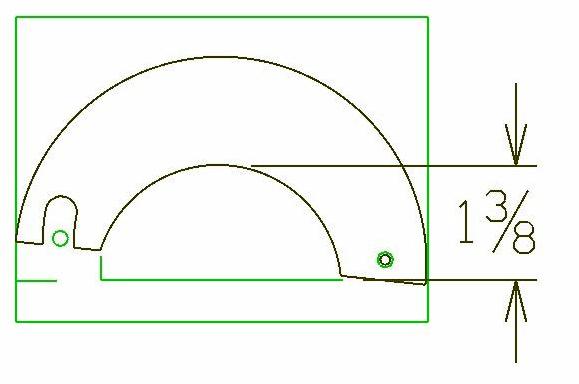
This one shows it adjusted down to the 1 1/4" range...
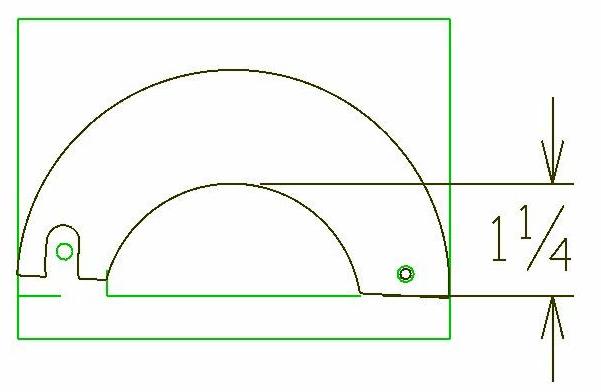
And this one shows it adjusted all the way closed.
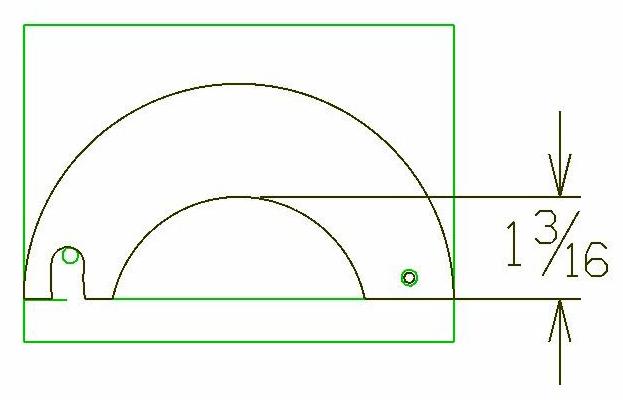
I'm a firm believer that if done properly and given enough time, any martin can learn to negotiate the fully closed crescent, especially if he/she was 'trained' to do so from the beginning. If you have a starling problem or are just starting out and are afraid of full crescents, then just maybe this is an option for you. And, before you know it, your martins will not only be negotiating these things just like mine and they will be safely nestled in the back of their gourds or house compartments where starlings just can't reach.. Give them some thought. They really aren't that hard to make and even easier to use.
Chuck Abare
Athens, AL